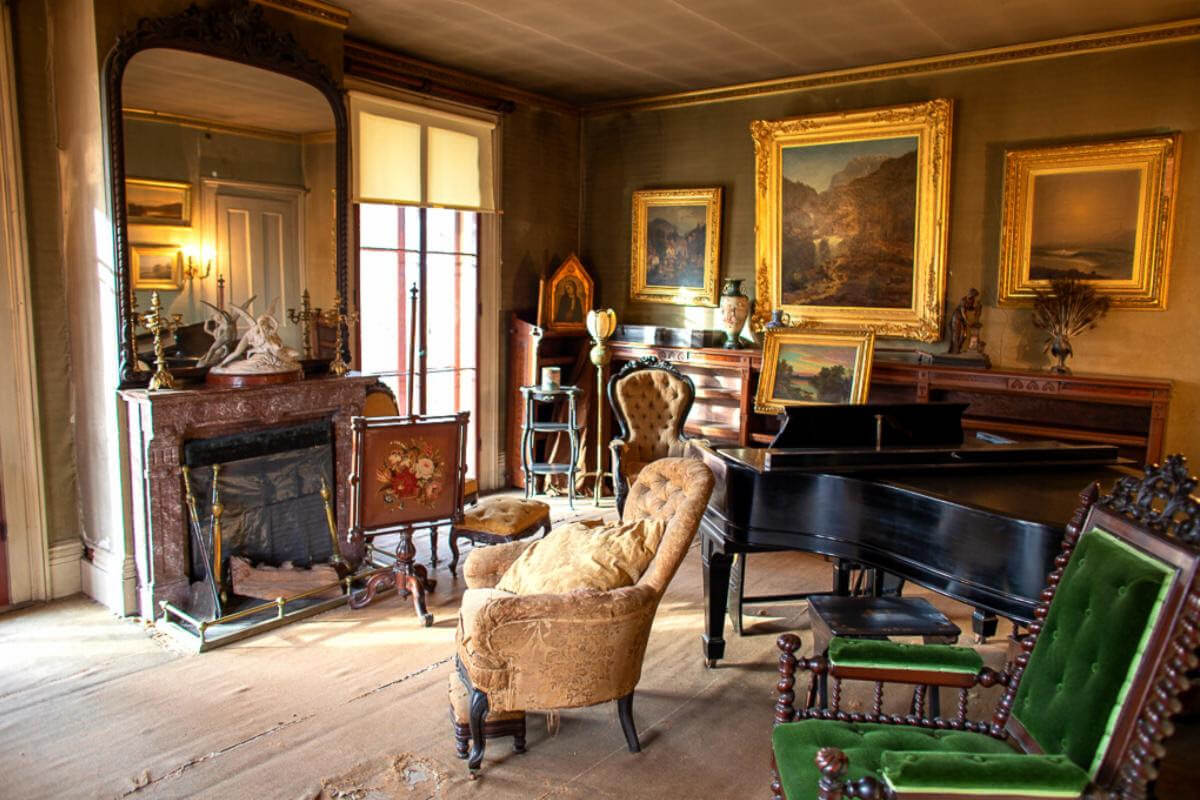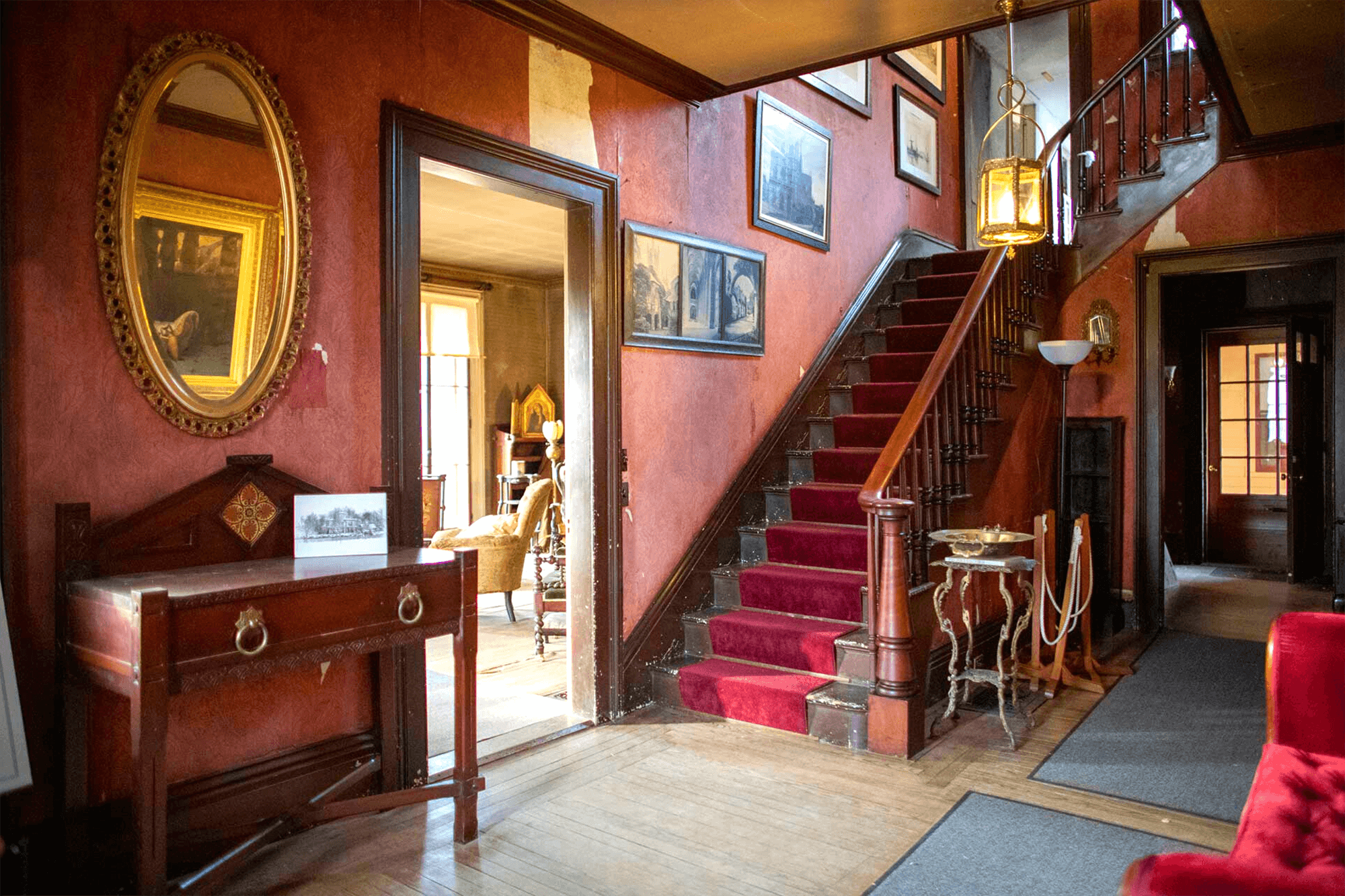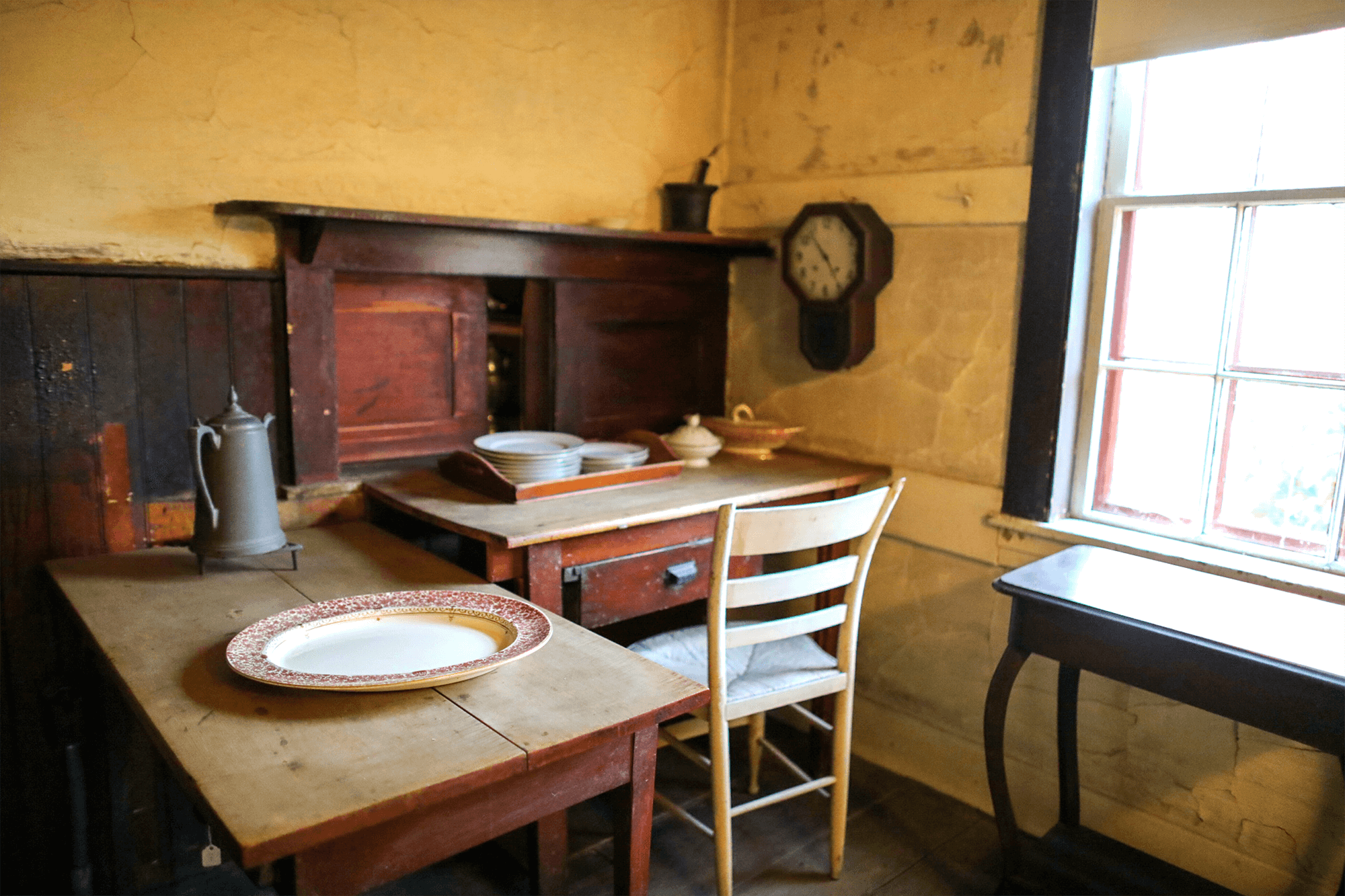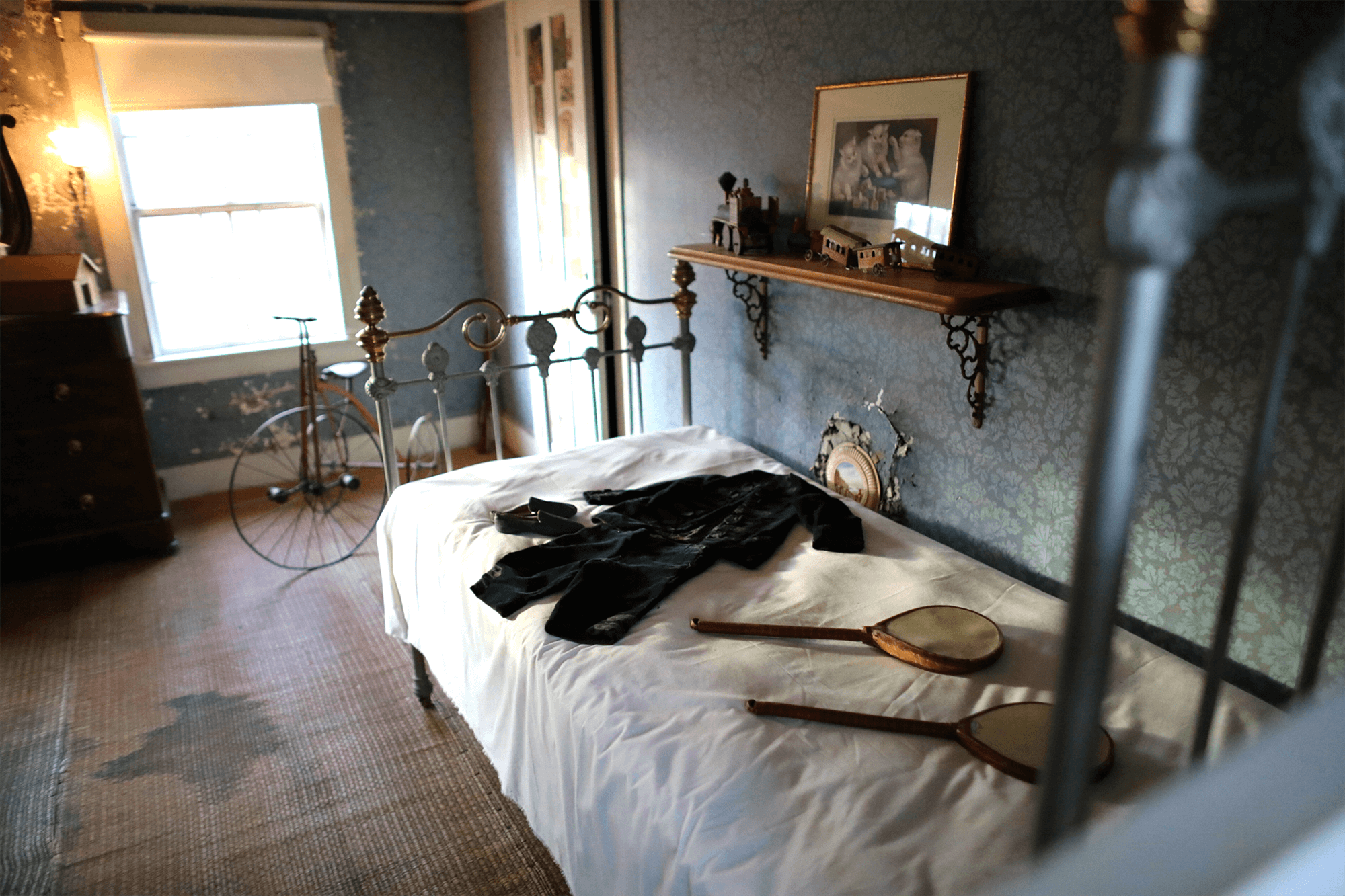Amherst is a small city in western Massachusetts with a long list of influential writers that have gallivanted its tree-lined streets, strolled its Town Common, or lectured in the classrooms of UMass Amherst. Playwright Annie Baker; Pulitzer Prize-winning poet Robert Frost; Noah Webster, author of An American Dictionary of the English Language; and other luminaries dating back to the 18th century grew up there.
Today, the family home of Amherst’s most famous resident, Emily Dickinson, has been restored after a five-year preservation effort. The Evergreens is an Italianate house designed by William Fenno Pratt in 1856 for Austin Dickinson, Emily’s brother. The newly restored home is sited not far from the Homestead, an older Georgian house at 280 Main Street where Emily Dickinson grew up with her siblings and father Edward Dickinson, a U.S. Congressman. Museum officials worked with Mesick Cohen Wilson Backer Architects (MCWB), a New York office, to develop a master plan for the grounds and write a historic structure report for the Evergreens. The restoration architects also prescribed green strategies for the antique home to cut down on energy consumption.
Curators said that both the Homestead and the Evergreens played important roles in the Dickinson family dynamic; and both buildings were incredibly formative in Emily’s poetry. These abodes, they noted, are essential for understanding Dickinson’s work as the 19th-century artist becomes more popular with today’s generation.

Austin Dickinson lived at the Evergreens with his wife, Susan, and frequently hosted family friends there including Ralph Waldo Emerson, Frederick Law Olmsted, Harriet Beecher Stowe, and Wendell Philips. Austin and Susan lived at the Evergreens until their deaths in 1895 and 1913, respectively.
Emily Dickinson meanwhile spent much of her life in seclusion. After briefly attending Mount Holyoke Female Seminary (the precursor to Mount Holyoke College), she edited texts and wrote poetry, but garnered little fanfare in comparison with what was to come. Ten of Dickinson’s poems were published in her lifetime. Before her death, Emily made her sister, Lavinia, promise that she’d burn her writings, just like Franz Kafka—an oath that was thankfully broken.

After Emily’s passing in 1886, Lavinia Dickinson discovered almost 1,800 unpublished poems by her sister, tucked away from public view. Her niece, Martha Dickinson Bianchi, quickly took an immense interest in Emily’s poetry. Mary eventually edited numerous collections by Emily, and authored biographical works about her in the 1920s and 30s. She lived at the Evergreens until her death in 1943, and preserved it without making changes.
Lavinia worked with Mabel Loomis Todd, an editor from Amherst, to proselytize Dickinson’s prose. Mabel eventually helped springboard Emily Dickinson into literary journals and lecture halls around the world. Now, there are public schools in cities around the U.S. and a park in Paris named after her. Painted brick facades in Amsterdam are emblazoned with her words.

Martha Dickinson Bianchi’s heirs, Alfred Leete Hampson and Mary Landis Hampson, worked hard to preserve the building as a cultural haven in the following decades. Thanks to their efforts, the Homestead and the Evergreens have hosted poetry festivals with famous artists, and workshops for aspiring writers of all ages.
Previous restoration projects from the past decade future-proofed spaces in the Homestead. Building on this stewardship, museum employees have been documenting the ephemera on display at the Homestead and the Evergreens since 2019 for perpetuity—its original family furniture, household accouterments, and decor. They also worked closely with MCWB to meet sustainability goals.

In the coming years, both the Evergreens and Homestead will continue the institution’s mission of preserving Emily Dickinson’s memory with cultural programming. “Reintroducing The Evergreens to our interpretive program has been a long-awaited step,” said Brooke Steinhauser, senior director of programs. “The condition of the house is uniquely evocative of the lives lived there. We can share more fully with visitors the stories not just of the poet’s daily inspiration stemming from these family relationships, but also the remarkable way her poetry came to the world posthumously and the motivations of the extraordinary people who recognized her genius and dedicated their lives to sharing it.”
The Emily Dickinson Museum formally reopens March 1, 2024.











